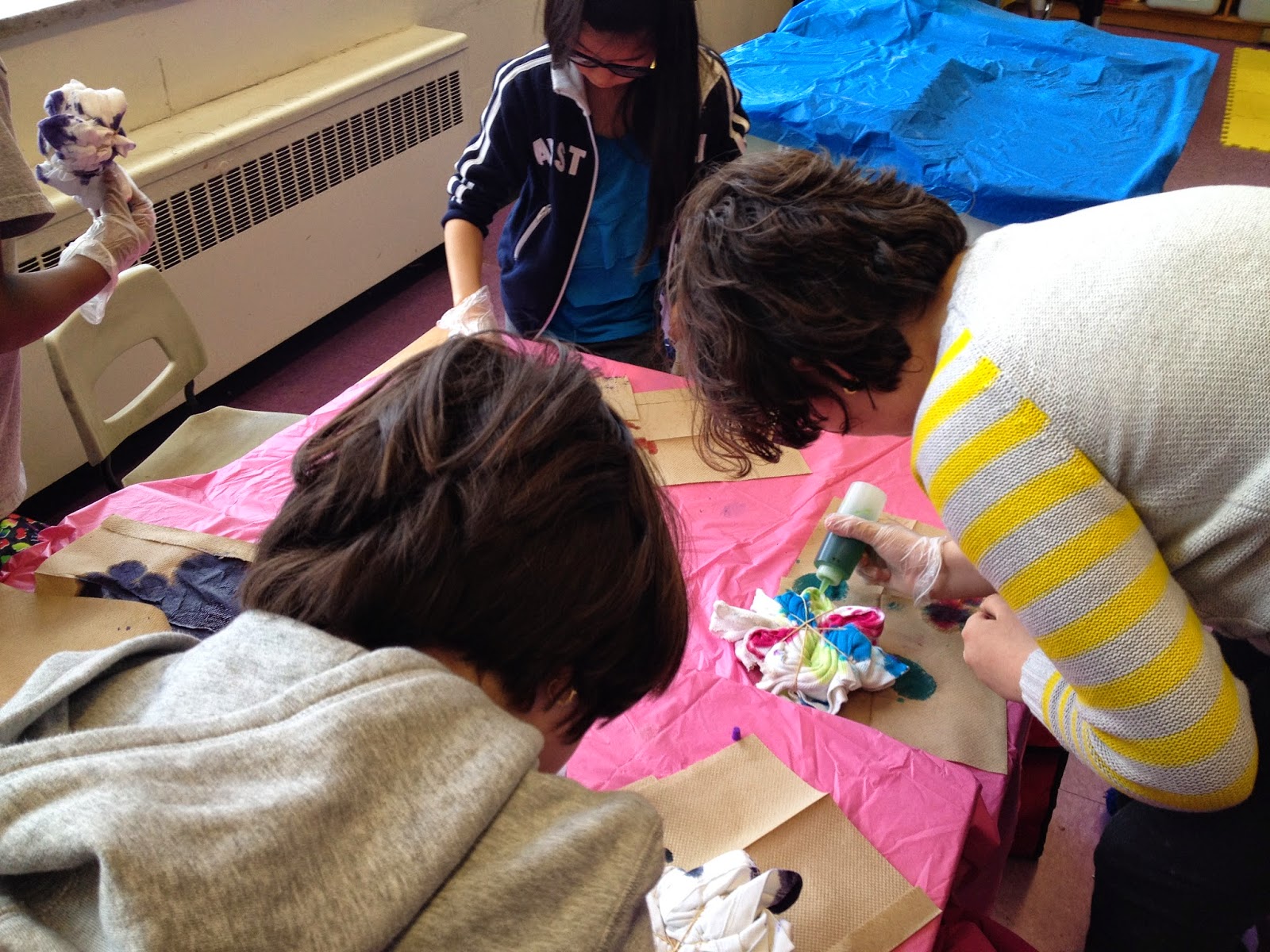We are ordinary students who are enthusiastic about art and the environment alike and need a canvas to express ourselves. Our canvases are egg cartons, plastic bottles, newspaper, among other reusable materials we find in our homes or are donated to us for re-use. We are eager to learn and help make our school a more beautiful and welcoming home for all of us. Please leave us comments for ideas or projects you wish us to take on. Merci!
Here we are in our tie dye shirts.
Monday, 27 April 2015
The Clairlea Hive!
As an eco school initiative, we are raising awareness about the colony collapse disorder of honey bees. They are not only dying, they are disappearing.
Bees are amazzzing!
They have much to teach us, they fascinate us, they are beautiful, and their importance to humans is beyond words. Honey bees, especially, are associated with the production of 1/3 of the worlds' food for humans (through pollination, but also honey), healing, and perhaps more than any other creature- if not the only creature, held up as setting a selfless example to humans on happy and successful communities. If we are able to work collaboratively, then we can share some of the success of the honey bee. Only that the result of honey tastes much sweeter.
So, we created our own Clairlea hives out of egg cartons, paper masher, newspaper, cardboard, and balloons. It was a team effort between the Eco Art club and students in Room 111.
Bees are amazzzing!
They have much to teach us, they fascinate us, they are beautiful, and their importance to humans is beyond words. Honey bees, especially, are associated with the production of 1/3 of the worlds' food for humans (through pollination, but also honey), healing, and perhaps more than any other creature- if not the only creature, held up as setting a selfless example to humans on happy and successful communities. If we are able to work collaboratively, then we can share some of the success of the honey bee. Only that the result of honey tastes much sweeter.
So, we created our own Clairlea hives out of egg cartons, paper masher, newspaper, cardboard, and balloons. It was a team effort between the Eco Art club and students in Room 111.
Tie Dye Shirts in the Making
We decided to reuse old shirts we had at home to make our very own, unique, colourful, and bright team shirts.
There are several techniques to tie dye (e.g., linear, zigzag, dotted, etc.). We used the spiral tie dye technique.
Instructions:
1. Put your thumb and index finger in the center of the shirt.
2. Begin moving them in a circular motion, spiraling the shirt around the center point.
3. When you have spiraled the entire shirt, use large rubber bands and place on shirt like "pie slices".
4. Apply tie dye colours in different compartments.
*Be careful to not mix undesired colours (i.e., green and orange would make brown).
5. Leave in a damp plastic bag for 6-8 hours.
6. Wash shirt in sink until the water runs clear.
7. Hang dry, preferably in the sun for best results.
Ta da!
There are several techniques to tie dye (e.g., linear, zigzag, dotted, etc.). We used the spiral tie dye technique.
Instructions:
1. Put your thumb and index finger in the center of the shirt.
2. Begin moving them in a circular motion, spiraling the shirt around the center point.
3. When you have spiraled the entire shirt, use large rubber bands and place on shirt like "pie slices".
4. Apply tie dye colours in different compartments.
*Be careful to not mix undesired colours (i.e., green and orange would make brown).
5. Leave in a damp plastic bag for 6-8 hours.
6. Wash shirt in sink until the water runs clear.
7. Hang dry, preferably in the sun for best results.
Ta da!
Welcome/Bienvenue!
The Eco Art club is a passionate team that aims to promote recycling through art. Their resulting art work is really impressive!
Stay tuned for pictures...
Stay tuned for pictures...
Subscribe to:
Comments (Atom)






















